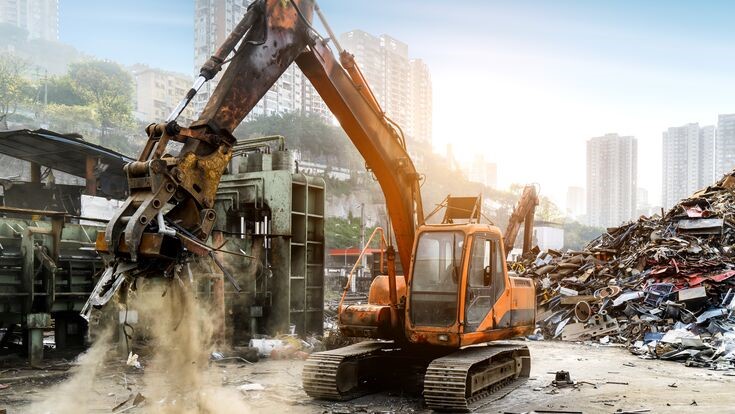Do you have a demolition project coming up?
Then you should think about waste management as much as you worry about the actual demolition. Construction and demolition activities can generate a massive amount of waste. It is important to handle all that waste responsibly.
As per statistics for 2018–19, waste from construction and demolition accounted for almost 27 million tonnes, which is 44% of all rubbish produced in Australia. That’s a lot of waste!
The good news is that there are plenty of options for managing this waste stream. In this blog post, we will explore 7 different ways of demolition waste management. After reading this post, you will be equipped with the knowledge to make the best decision for your next project.
1. Recycling
The first method of demolition waste management is recycling the material. It is a beneficial option because it keeps the material out of landfills and reduces the need for virgin materials.
When recycling demolition waste, it is important to sort the material so it can be processed appropriately.
Common recyclable materials from construction and demolition projects include
- Concrete
- Wood
- Metal
- Asphalt
2. Reuse
Another option for managing demolition waste is by reusing the material on-site. It could mean using leftover bricks to build a garden wall or using scrap lumber to create temporary supports during construction.
Reusing material on-site is a great way to save money and reduce waste.
3. Waste-to-energy
The other way of demolition waste management is converting waste into energy. Waste-to-energy facilities use heat from burning garbage to generate electricity or steam to heat buildings or power industry equipment.
These facilities are beneficial because they reduce the amount of material going to landfills and generate renewable energy. It is an excellent way to discard non-hazardous waste and produce energy for homes and businesses.
4. Composting
Composting is another option for managing demolition waste. It involves breaking down organic material such as food scraps and yard trimmings into a nutrient-rich soil amendment called compost.
Composting is beneficial because it reduces methane emissions from landfills and improves soil health.
5. Incorporating debris into art
It may seem like an unconventional way of managing demolition waste, but incorporating debris into art can be quite beautiful.
It is also a great way to engage with your community and raise awareness about recycling and reuse. Local artists can make a name for themselves by turning construction site fencing into colourful works of art.
It has become increasingly popular, and one example is The Spire, an architectural sculpture made from reused steel beams.
6. Donate
The last way of handling demolition waste is a donation. If the waste is in acceptable condition, certain non-profit groups will accept it. Always check the site to exclude items that could be useful to others.
You may want to think about donating the following things:
- Furniture\sBikes
- Mobile devices
- any out-of-date technology, such as computers
- Upholstery
7. Scrap Metal Pickup
A scrap metal pickup service is one of the greatest and mutually beneficial ways to recycle metal waste from a demolition job. These service providers pay you in return for collecting and recycling the materials.
However, before hiring a scrap metal removal service, you should understand the distinction between non-ferrous and ferrous metals. While some providers will pay only for non-ferrous materials, some are willing to take both.
Because they are more prevalent, ferrous metals are less valuable. Ferrous metals, for example, are:
- Wrought iron
- Stainless steel
- Cast iron
But due to their scarcity and higher price, non-ferrous metals are more in demand. Non-ferrous metals include, for example:
- Copper
- Aluminium
- Brass
8. Landfilling
The last one on our list is landfilling. It is the most well-known and common method of managing demolition waste. It involves disposing of the material in a landfill where it will take up space.
Landfilling should be used only as a last resort after all other options have been exhausted because this can release harmful pollutants into the groundwater. As a result, many demolition companies prefer going for more sustainable methods of demolition waste management.
Conclusion:
These are the 8 brilliant ways of handling the waste generated from a demolition job. Some are better than others, but it depends on your needs and priorities.
First of all, it can be helpful to carry out an evaluation to find out the different kinds of material involved. Depending on this, you can figure out the best course of action for handling the task at hand.
Demolition projects can generate a lot of waste, but as you can see, there are many options for managing that waste stream. A demolition company will make calls about waste management after considering all the risks involved.
Are you looking for a reliable licensed house demolition company? You should check out the Merhi Group. Their demolition services are one of the best you can find!


No comments yet